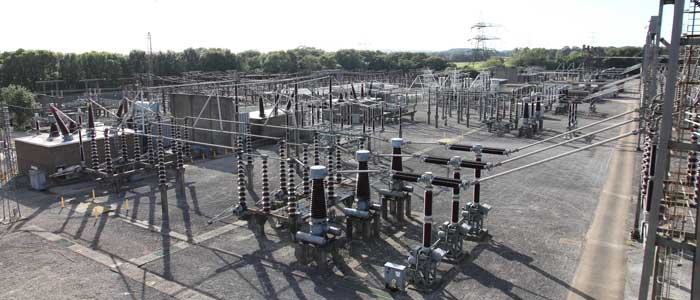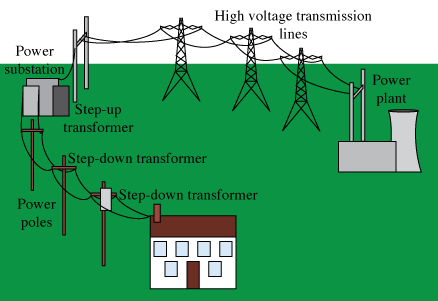A grid substation is a power system facility in which electricity is converted from high to low voltage or the reverse. Substations are typically located at points of heavy demand, near generation plants, or where transmission lines connect. A typical grid substation diagram includes a transformer for voltage conversion, equipment for switching and protection, and other devices for monitoring and control.
A grid substation is a type of electrical substation that is used to distribute power throughout an electrical grid. The diagram below shows a typical grid substation layout.
The main components of a grid substation include transformers, circuit breakers, and switchgear.
The transformers raise or lower the voltage of the electricity so that it can be distributed to homes and businesses safely. The circuit breakers protect the transformers and other equipment from damage by disconnecting the flow of electricity if there is an overload. The switchgear controls the flow of electricity within the substation.
Grid substations play an important role in distributing electricity safely and efficiently throughout a power grid. Without them, homes and businesses would not have access to reliable electricity.
How Do Substations Work?
66 Kv Substation Components
A 66 kV substation is a type of electrical substation that uses voltages in the range of 60-66 kV. They are typically used to supply power to industrial and commercial users. The main components of a 66 kV substation include:
-A transformer that steps down the voltage from the high-voltage transmission line to a lower voltage that can be used by consumers.
-An air switch that isolates the transformer from the high-voltage transmission line when maintenance is being performed on the transformer or other equipment in the substation.
-A circuit breaker that protects equipment in the substation from damage caused by faults or overloads on the electrical system.
– A grounding system that provides a safe path for electricity to flow if there is a fault on the system.
– A control panel that allows operators to monitor and control equipment in the substation.

Credit: www.emfs.info
What is Grid Substation?
A grid substation is a type of substation that is used to connect two or more electrical grids. They are typically used to connect different voltage levels or phases in order to improve power transfer efficiency. Grid substations can also be used to provide backup power supplies in case of outages.
What are the Three Types of Substations?
A substation is an electrical installation where equipment for generating, distributing and using electricity is concentrated. Substations transform voltage from high to low, or the reverse, or perform other important functions such as switching current circuits.
The three types of substations are:
– Transmission Substations
– Distribution Substations
What is the Difference between Grid Substation And Substation?
A grid substation is a facility where electricity is received from the power grid and converted to a lower voltage before being sent to customers. A substation, on the other hand, is an electrical installation that receives power from another source, such as a generator, and then converts it to a higher or lower voltage before sending it on to another destination.
What is a Substation Diagram?
An electrical substation is a crucial part of the electricity network. It is where voltage is transformed from high to low, or the reverse, using transformers. Substations also switch electricity supply between different parts of the network.
This ensures that power flows to where it is needed most efficiently.
A substation diagram provides a visual representation of an electrical substation and its components. It helps engineers to understand the layout of the substation and how it works.
The diagram shows all the important equipment in the substation, including transformers, switchgear, circuit breakers and busbars.
Substation diagrams are essential for engineers who need to carry out maintenance or make changes to the substation equipment. They provide a clear overview of what needs to be done and where each piece of equipment is located.
Conclusion
A grid substation is a type of power plant that is used to convert electricity from one form to another. The most common type of grid substation is the alternating current (AC) substation, which converts electric power from direct current (DC) to AC. AC substations are typically used in high-voltage transmission systems, while DC substations are used in lower-voltage distribution systems.
Grid substations come in a variety of shapes and sizes, but all contain three basic components: transformers, circuit breakers, and disconnects. Transformers convert electricity from one voltage to another, while circuit breakers protect equipment from damage by interrupting the flow of electricity when necessary. Disconnects provide a way to safely shut off the flow of electricity to specific parts of the grid substation.



